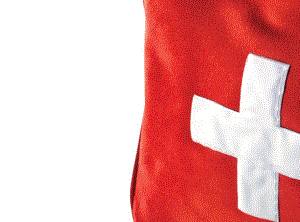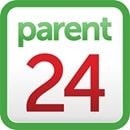
CPR: Baby under one
- Hazards Ensure the environment is safe.
- Hello tap your baby's foot and check if he responds.
- Help Send for or call for help if your baby does not respond.
Circulation
- Kneel or stand next to your baby's chest.
- Move any clothes out of the way.
- Place two fingers on the centre of his chest just below the nipple line.
- Push down 30 times to a depth of about 4cm at a rate of at least 100 compressions per minute.
- After 30 compressions give two breaths.
Airway
- Place one hand on his forehead and the fingers of your other on the bony part of your baby's chin, tilt his head back.
Breathing
- Cover your baby's mouth and nose with your mouth.
- Give two rescue breaths (one second per breath).
- His chest must rise with each breath.
- Continue with 30 compressions and two rescue breaths for five sets and then if you are alone, go and phone for an ambulance.
- Continue giving CPR until baby's normal breathing returns, or the ambulance arrives.
CPR: Child over one
- Hazards Ensure the environment around oyur child is safe.
- Hello Tap both shoulders and check if your child responds.
- Help Send for or call for help if your child does not respond.
Circulation
- Move clothes out of the way.
- Place the heel of one hand on the sternum/breastbone between the nipples. For children older than eight years use two hands.
- Push down 30 times to a depth of about 5cm at a rate of at least 100 compressions per minute.
- After 30 compressions give two breaths.
Airway
- Open the airway with a head tilt-chin lift movement.
Breathing
- Place your mouth over your child's mouth and pinch his nose closed.
- Give two rescue breaths (one second per breath).
- His chest must rise with each breath.
- Continue with 30 compressions and two breaths for five sets and then if you're alone, go and phone for help.
- Continue giving CPR until normal breathing returns, your child speaks, moves or advanced care takes over.
- If your child starts to breathe normally, place him on his side, keep checking to make sure he is still breathing.
CHOKING: Baby under one
If a baby can babble, speak or cough, the airway is only partially obstructed. Encourage him to cough to remove the object causing the choking.
Conscious baby
- When your baby's airway is completely obstructed, there will be no sound or high-pitched cry.
- Kneel down and place your baby face down over your forearm resting against your thigh.
- Give up to five quick backslaps between your baby's shoulders.
- If this is unsuccessful, turn your baby over, keeping his head below his body, and give up to five quick chest thrusts on the centre of your baby's between the nipples.
- Repeat backslaps and chest thrusts until the object is expelled or your baby becomes unconscious.
Unconscious baby
- If your baby falls unconscious while choking, perform CPR immediately.
- Check for the obstruction between compressions and breaths.
- Continue until the obstruction is removed or medical assistance arrives.
CHOKING: Child over one
Look for the universal distress signal (hands around the neck), ask your child if he is choking.
Conscious child
- Stand behind your child and make a fist with one hand.
- Place your fist with the thumb side just above his naval, but well below his breatsbone.
- Grasp your fist with your other hand and give quick, upward and inward thrusts into your child's abdomen until the object is forced out and he can breathe, cough or talk, or until he stops responding.
Unconscious child
- Perform CPR.
- Check for the obstruction between compressions and breaths. Continue until the obstruction is removed or medical assistance arrives.
BURNS
- If the clothes can be removed, remove them. Never rip off, as this will take the skin off too.
- Cool the burn down under a cold tap for 10 minutes.
- Once cool, apply Burnshield and cover with a sterile dressing.
HEAD INJURIES
- Ensure your child is breathing.
- Do not be distracted by blood; head injuries tend to bleed profusely.
- Do not allow the child to move his head or neck.
- Signs of a head injury may include: bruising, swelling, irritability, confusion, headache, nausea, vomiting, unequal pupils, bleeding from the ears or nose, seizures.
- Apply an ice pack to the injured area.
- Cover wounds with a dressing and press gently to control bleeding.
- Watch for any abnormal behaviour.
- Monitor the child carefully for 24 hours, and if any of the above signs or symptoms appear, take the child to the doctor immediately.
- If the incident occurred close to bedtime, check on him every few hours for any change in breathing, colour or appearance. If the child cannot be awakened or shows signs of an internal head injury, call for an ambulance.
- If in doubt, it is better that your child sees a doctor. If the wound is deep and bleeding profusely, it will need to have stitches.
POISONING
- Do not ever induce vomiting in the event of a poisoning.
- Contact your nearest poison control centre.
- Only perform a procedure which the doctor at the poison centre advises.
- Ensure that your child is breathing.
- Do not leave your child alone.
- For chemicals in the eye, wash his eye under cold running water. Ensure the water does not run from the affected eye into the other eye.
- Then call for the ambulance to take your child to the nearest hospital for treatment.
CRUSHED FINGERS
- Release the trapped hand; if your child has difficulty moving the fingers, they may be broken.
- Hold his hand under cool running water, or use an ice pack on fingers.
- Bandage his fingers together.
- See a doctor if there is severe pain, deformity, deep cuts or blood under the nail.
REMEMBER
- Go on a first aid course, get a first aid kit and babyproof your house before your baby is born. The first montsh fly by and before you know it, your baby will be on the move.
- To get down on your hands and knees to get a baby's perspective on potential hazards. They see things you don't see.
- Babies learning to walk fall over constantly. Toddlers remain accident prone months after learning how to run or walk.
- Accidents happen when you're on holiday and out of your normal environment and routine.
- And accidents happen at big gatherings, when you assume someone else is watching your child. They're not.




 Publications
Publications
 Partners
Partners














